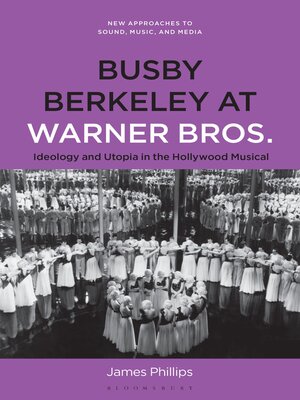Busby Berkeley at Warner Bros
ebook ∣ Ideology and Utopia in the Hollywood Musical · New Approaches to Sound, Music, and Media
By James Phillips

Sign up to save your library
With an OverDrive account, you can save your favorite libraries for at-a-glance information about availability. Find out more about OverDrive accounts.
Find this title in Libby, the library reading app by OverDrive.



Search for a digital library with this title
Title found at these libraries:
| Library Name | Distance |
|---|---|
| Loading... |
Busby Berkeley's big-production numbers are emblematic of the Hollywood dream factory.
Exploring the tensions between escapism and ideological over-coding in the Warner Bros. musical, this book tracks the ways in which Berkeley created spectacles that are both critical and complacent in relation to the society that produced and received them.
Berkeley carried into his images of utopia the assembly plant, the misogyny, the fascism and racism of his day, but his collaboration with the filmmakers (Enright, Bacon and LeRoy) into whose narratives his numbers were spliced likewise involved taking care to draw a line between spectacle and the everyday. The book makes the case that the Warner Bros. musical, with its attention to the specificity and containment of the aesthetic dimension, has corrective lessons to impart for the aestheticized politics not only of the 1930s, but also of the current age.
Exploring the tensions between escapism and ideological over-coding in the Warner Bros. musical, this book tracks the ways in which Berkeley created spectacles that are both critical and complacent in relation to the society that produced and received them.
Berkeley carried into his images of utopia the assembly plant, the misogyny, the fascism and racism of his day, but his collaboration with the filmmakers (Enright, Bacon and LeRoy) into whose narratives his numbers were spliced likewise involved taking care to draw a line between spectacle and the everyday. The book makes the case that the Warner Bros. musical, with its attention to the specificity and containment of the aesthetic dimension, has corrective lessons to impart for the aestheticized politics not only of the 1930s, but also of the current age.







